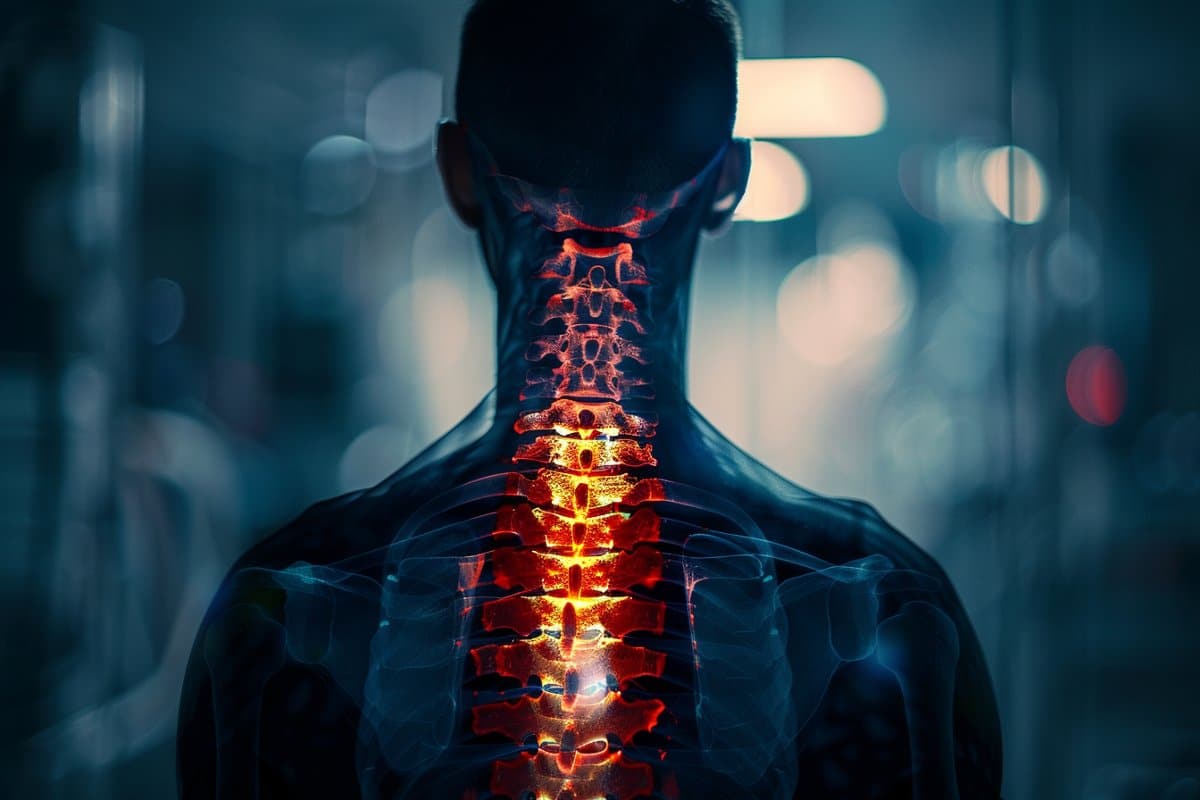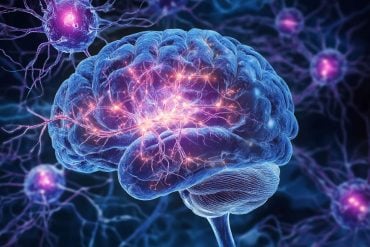Summary: A new study demonstrates how spinal cord injuries can lead to significant metabolic disruptions, including the onset of conditions such as diabetes and heart disease. The study found that abnormal neuronal activities post-injury lead to excessive breakdown of triglycerides in fat tissue, releasing harmful compounds into organs like the liver.
By administering gabapentin, a nerve pain medication, researchers successfully prevented these metabolic effects in animal models. This discovery could pave the way for new treatments that mitigate the secondary health issues caused by spinal injuries.
Key Facts:
- The study identifies a link between spinal cord injuries and metabolic dysfunctions due to abnormal neuronal activity affecting fat tissue.
- Gabapentin was effective in normalizing metabolic functions in mice by inhibiting problematic neural proteins and preventing the excessive breakdown of fats.
- Despite its benefits, gabapentin induced insulin resistance, prompting researchers to adjust dosing strategies to retain therapeutic effects while minimizing side effects.
Source: Ohio State University
Conditions such as diabetes, heart attack and vascular diseases commonly diagnosed in people with spinal cord injuries can be traced to abnormal post-injury neuronal activity that causes abdominal fat tissue compounds to leak and pool in the liver and other organs, a new animal study has found.
After discovering the connection between dysregulated neuron function and the breakdown of triglycerides in fat tissue in mice, researchers found that a short course of the drug gabapentin, commonly prescribed for nerve pain, prevented the damaging metabolic effects of the spinal cord injury.

Gabapentin inhibits a neural protein that, after the nervous system is damaged, becomes overactive and causes communication problems – in this case, affecting sensory neurons and the abdominal fat tissue to which they’re sending signals.
“We believe there is maladaptive reorganization of the sensory system that causes the fat to undergo changes, initiating a chain of reactions – triglycerides start breaking down into glycerol and free fatty acids that are released in circulation and taken up by the liver, the heart, the muscles, and accumulating, setting up conditions for insulin resistance,” said senior author Andrea Tedeschi, assistant professor of neuroscience in The Ohio State University College of Medicine.
“Through administration of gabapentin, we were able to normalize metabolic function.”
The study is published today (April 24, 2024) in Cell Reports Medicine.
Previous research has found that cardiometabolic diseases are among the leading causes of death in people who have experienced a spinal cord injury.
These often chronic disorders can be related to dysfunction in visceral white fat (or adipose tissue), which has a complex metabolic role of storing energy and releasing fatty acids as needed for fuel, but also helping keep blood sugar levels at an even keel.
Earlier investigations of these diseases in people with neuronal damage have focused on adipose tissue function and the role of the sympathetic nervous system – nerve activity known for its “fight or flight” response, but also a regulator of adipose tissue that surrounds the abdominal organs.
Instead, Debasish Roy – a postdoctoral researcher in the Tedeschi lab and first author on the paper – decided to focus on sensory neurons in this context. Tedeschi and colleagues have previously shown that a neuronal receptor protein called alpha2delta1 is overexpressed after spinal cord injury, and its increased activation interferes with post-injury function of axons, the long, slender extensions of nerve cell bodies that transmit messages.
In this new work, researchers first observed how sensory neurons connect to adipose tissue under healthy conditions, and created a spinal cord injury mouse model that affected only those neurons – without interrupting the sympathetic nervous system.
Experiments revealed a cascade of abnormal activity within seven days after the injury in neurons – though only in their communication function, not their regrowth or structure – and in visceral fat tissue.
Expression of the alpha2delta1 receptor in sensory neurons increased as they over-secreted a neuropeptide called CGRP, all while communicating through synaptic transmission to the fat tissue – which, in a state of dysregulation, drove up levels of a receptor protein that engaged with the CGRP.
“These are quite rapid changes. As soon as we disrupt sensory processing as a result of spinal cord injury, we see changes in the fat,” Tedeschi said. “A vicious cycle is established – it’s almost like you’re pressing the gas pedal so your car can run out of gas but someone else continues to refill the tank, so it never runs out.”
The result is the spillover of free fatty acids and glycerol from fat tissue, a process called lipolysis, that has gone out of control. Results also showed an increase in blood flow in fat tissue and recruitment of immune cells to the environment.
“The fat is responding to the presence of CGRP, and it’s activating lipolysis,” Tedeschi said. “CGRP is also a potent vasodilator, and we saw increased vascularization of the fat – new blood vessels forming as a result of the spinal cord injury. And the recruitment of monocytes can help set up a chronic pro-inflammatory state.”
Silencing the genes that encode the alpha2delta1 receptor restored the fat tissue to normal function, indicating that gabapentin – which targets alpha2delta1 and its partner, alpha2delta2 – was a good treatment candidate.
Tedeschi’s lab has previously shown in animal studies that gabapentin helped restore limb function after spinal cord injury and boosted functional recovery after stroke.
But in these experiments, Roy discovered something tricky about gabapentin: The drug prevented changes in abdominal fat tissue and lowered CGRP in the blood – and in turn prevented spillover of fatty acids into the liver a month later, establishing normal metabolic conditions. But paradoxically, the mice developed insulin resistance – a known side effect of gabapentin.
The team changed drug delivery tactics, starting with a high dose and tapering off – and stopping after four weeks.
“This way, we were able to normalize metabolism to a condition much more similar to control mice,” Roy said. “This suggests that as we discontinue administration of the drug, we retain beneficial action and prevent spillover of lipids in the liver. That was really exciting.”
Finally, researchers examined how genes known to regulate white fat tissue were affected by targeting alpha2delta1 genetically or with gabapentin, and found both of these interventions after spinal cord injury suppress genes responsible for disrupting metabolic functions.
Tedeschi said the combined findings suggest starting gabapentin treatment early after a spinal cord injury may protect against detrimental conditions involving fat tissue that lead to cardiometabolic disease – and could enable discontinuing the drug while retaining its benefits and lowering the risk for side effects.
Funding: This work was supported by grants from the National Institute of Neurological Disorders and Stroke and the National Institutes of Health, and by the Chronic Brain Injury program at Ohio State.
Co-authors, all from Ohio State, were Elliot Dion, Jesse Sepeda, Juan Peng, Sai Rishik Lingam, Kristy Townsend, Andrew Sas and Wenjing Sun.
About this spinal cord injury and metabolism research news
Author: Emily Caldwell
Source: Ohio State University
Contact: Emily Caldwell – Ohio State University
Image: The image is credited to Neuroscience News
Original Research: Open access.
“α2δ1-mediated maladaptive sensory plasticity disrupts adipose tissue homeostasis following spinal cord injury” by Andrea Tedeschi et al. Cell Reports Medicine
Abstract
α2δ1-mediated maladaptive sensory plasticity disrupts adipose tissue homeostasis following spinal cord injury
Highlights
- SCI exacerbates lipolysis in epididymal white adipose tissue (eWAT)
- SCI leads to increased α2δ1 expression in CGRP-positive DRG neurons innervating eWAT
- Cacna2d1 conditional deletion in DRG neurons normalizes eWAT lipolysis after SCI
- α2δ1 blockade via gabapentin administration normalizes eWAT lipolysis after SCI
Summary
Spinal cord injury (SCI) increases the risk of cardiometabolic disorders, including hypertension, dyslipidemia, and insulin resistance. Not only does SCI lead to pathological expansion of adipose tissue, but it also leads to ectopic lipid accumulation in organs integral to glucose and insulin metabolism. The pathophysiological changes that underlie adipose tissue dysfunction after SCI are unknown.
Here, we find that SCI exacerbates lipolysis in epididymal white adipose tissue (eWAT).
Whereas expression of the α2δ1 subunit of voltage-gated calcium channels increases in calcitonin gene-related peptide-positive dorsal root ganglia neurons that project to eWAT, conditional deletion of the gene encoding α2δ1 in these neurons normalizes eWAT lipolysis after SCI.
Furthermore, α2δ1 pharmacological blockade through systemic administration of gabapentin also normalizes eWAT lipolysis after SCI, preventing ectopic lipid accumulation in the liver.
Thus, our study provides insight into molecular causes of maladaptive sensory processing in eWAT, facilitating the development of strategies to reduce metabolic and cardiovascular complications after SCI.






